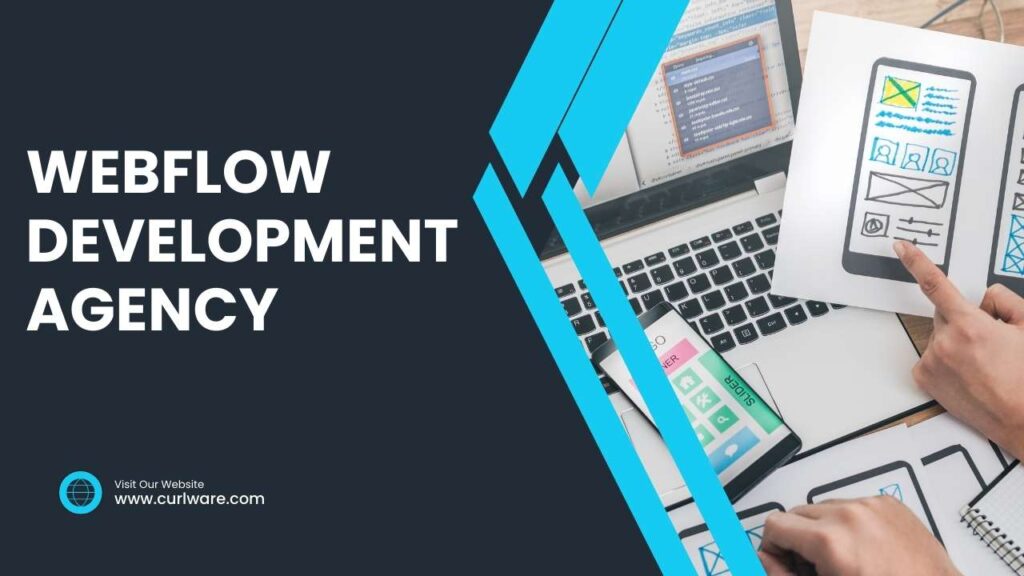In the ever-evolving world of web design and development, the ability to seamlessly transfer designs from Figma to WordPress is a skill highly sought after. This comprehensive guide will delve into the nuances of how to transfer Figma to WordPress, ensuring that your website not only looks great but also functions efficiently.
Table of Contents
- Understanding the Importance of Figma to WordPress Integration
- Overview of the Process: What to Expect
- Part 1. Preparing Your Figma Design
- Part 2. Understanding WordPress Structure
- Part 3: Tools and Plugins for Conversion
- Part 4: The Conversion Process
- Part 5: Enhancing Your WordPress Site
- Part 6: Advanced Techniques
- Part 7: Case Studies and Examples
- Part 8: Maintaining Your WordPress Site
Understanding the Importance of Figma to WordPress Integration
Figma has revolutionized the way designers create user interfaces and experiences. However, the true potential of these designs is realized when they are flawlessly integrated into WordPress, the world’s most popular content management system. Understanding how to transfer Figma to WordPress is crucial for maintaining design integrity and ensuring a seamless user experience.
Overview of the Process: What to Expect
Transferring designs from Figma to WordPress involves a series of steps, each crucial for the success of the final product. This guide will provide a detailed roadmap, from preparing your Figma design to maintaining your WordPress site.
Part 1. Preparing Your Figma Design
Optimizing Figma Designs for WordPress
Ensuring Compatibility and Responsiveness
To ensure a smooth transition, it’s essential to optimize your Figma designs for WordPress. This includes understanding how to transfer Figma to WordPress while maintaining responsiveness across various devices and screen sizes.
Organizing Layers and Components
Best Practices for a Smooth Transition
Organizing layers and components in Figma is critical for a hassle-free conversion. This section will cover best practices on how to transfer Figma to WordPress, focusing on layer organization and component structuring.
Part 2. Understanding WordPress Structure
WordPress Themes and Templates: A Primer
How They Work with Figma Designs
WordPress and Figma offer a powerful combination for web design and development. Figma, a popular design tool, enables designers to create detailed and interactive website layouts. These designs can be meticulously crafted with a focus on user experience and aesthetics. Once a design is finalized in Figma, developers can use it as a blueprint to build the website on WordPress, a versatile content management system. WordPress provides the functionality to turn these designs into fully functional websites. By integrating Figma designs into WordPress, users can achieve a seamless transition from design to development, ensuring the final website closely matches the original vision. This integration streamlines the web development process, making it efficient and effective in producing high-quality, visually appealing websites.
Custom Post Types and Widgets
Leveraging WordPress Features for Your Design
WordPress, a versatile platform, offers a plethora of features that enhance web design. Its intuitive interface allows both beginners and advanced users to create aesthetically pleasing, functional websites. Key features include customizable themes, which provide a solid foundation for unique designs. Plugins extend functionality, from SEO optimization to social media integration, catering to diverse needs. The Gutenberg editor simplifies content layout, offering blocks for text, images, and more, ensuring a responsive design across devices. WordPress also supports multimedia integration, vital for engaging, dynamic websites. Regular updates and a vast community for support make WordPress a reliable and adaptable choice for web designers.
Part 3: Tools and Plugins for Conversion
Top Tools for Figma to WordPress Conversion
Features and Comparisons
Transitioning from Figma to WordPress represents a shift from design conceptualization to functional website creation. Figma excels in design flexibility, offering a collaborative platform for intricate design mockups with real-time team collaboration. Its vector-based approach ensures high-fidelity designs. Conversely, WordPress, a robust content management system, brings these designs to life. It offers extensive customization through themes and plugins, catering to both beginners and advanced users. The key comparison lies in their primary functions: Figma is a design tool, ideal for creating and prototyping website layouts, while WordPress focuses on website building and management, turning those designs into fully operational websites.
Plugins That Simplify the Process
Recommendations and Installation Guides
Transitioning from Figma designs to a WordPress site can be seamless with the right approach. Firstly, choose a WordPress theme that closely matches your Figma design for easier adaptation. Plugins like ‘Figma to WP’ simplify the process by converting designs into WordPress elements. For installation, ensure your WordPress environment is up-to-date. Import your Figma design into the plugin, then adjust layouts and styles within WordPress to match your original design. Remember, responsiveness is key, so test your site on various devices. Lastly, optimize for speed and SEO to enhance user experience and visibility.
Part 4: The Conversion Process
Step-by-Step Guide: From Figma to WordPress
A Detailed Walkthrough
offers an insightful guide for designers and developers looking to seamlessly transition their Figma designs into fully functional WordPress websites. This comprehensive guide delves into the nuances of converting Figma’s intricate design elements into WordPress themes, ensuring a pixel-perfect replication. It covers essential steps such as exporting assets, understanding WordPress structure, and utilizing plugins for smooth integration. Whether you’re a beginner or an advanced user, this walkthrough simplifies the process, bridging the gap between design and development. It’s an indispensable resource for those aiming to bring their creative visions to life in the digital world.
Troubleshooting Common Issues
Solutions and Workarounds
In the ever-evolving landscape of technology and business, encountering obstacles is inevitable. However, the key to progress lies not just in facing these challenges but in devising creative solutions and workarounds. These strategies are not mere fixes; they are testaments to human ingenuity and adaptability. By embracing a mindset that views problems as opportunities for growth and innovation, we can transform potential setbacks into stepping stones toward success. This approach not only resolves immediate issues but also enhances our skills and knowledge, preparing us for future challenges. In this dynamic environment, the ability to find effective solutions and workarounds is not just valuable, it’s essential.
Part 5: Enhancing Your WordPress Site
Customizing Themes to Match Figma Designs
Tips and Tricks
Customizing themes to match Figma designs involves a blend of creativity and technical precision. Start by thoroughly analyzing the Figma design, noting color schemes, typography, and layout structures. Prioritize maintaining the design’s integrity while adapting it to the theme’s capabilities. Utilize CSS for styling, ensuring colors and fonts are accurately replicated. Responsive design is crucial; ensure the theme adjusts seamlessly across devices, mirroring Figma’s fluidity. Incorporate interactive elements like hover effects to enhance user experience. Regularly compare your progress with the original design, making adjustments as needed. Remember, the goal is a harmonious blend of Figma’s design vision with the theme’s functional prowess.
Responsive Design and Mobile Optimization
Ensuring Cross-Platform Compatibility
Ensuring cross-platform compatibility when transitioning designs from Figma to WordPress is crucial for a seamless user experience. This process involves meticulous attention to detail, ensuring that the visual elements and functionalities created in Figma are accurately replicated in WordPress. Key considerations include responsive design, ensuring that layouts adapt smoothly across different devices and screen sizes. Additionally, maintaining consistency in fonts, colors, and interactive elements is vital. Utilizing WordPress themes and plugins that are compatible with Figma designs can greatly facilitate this process. Regular testing on various browsers and devices is essential to identify and rectify any compatibility issues, ensuring a uniform and engaging user experience across all platforms.
Part 6: Advanced Techniques
Using CSS and HTML for Further Customization
Beyond Basic Integration
Figma to WordPress” unlocks a seamless transition from design to development. This guide is essential for those looking to bridge the gap between Figma’s innovative design interfaces and the robust functionality of WordPress. It’s not just about transferring static designs; it’s about creating dynamic, responsive, and interactive websites that resonate with your audience. Whether you’re a designer eager to see your visions come to life or a developer striving for efficiency and precision, this resource provides step-by-step instructions, best practices, and tips to enhance your workflow. Embrace the future of web design and development with this comprehensive guide to Figma-WordPress integration.
Interactive Elements and Animations
Bringing Your Figma Designs to Life
Bringing Your Figma Designs to Life” is about transforming static designs into dynamic, interactive experiences. Figma, a powerful design tool, enables designers to create detailed, visually appealing interfaces. However, the true magic happens when these designs are translated into functional websites or applications. This process involves a blend of design understanding and technical skills, bridging the gap between a designer’s vision and a user’s experience. It’s not just about making things look good, but ensuring they work well and resonate with the end-users. This journey from Figma to functionality is crucial in today’s digital landscape, where engaging user experiences are key to success.
Part 7: Case Studies and Examples
Successful Figma to WordPress Projects
Real-World Applications
Figma, a powerful design tool, is revolutionizing the way websites are created, especially for WordPress, the world’s most popular content management system. By enabling a seamless transition from design to development, Figma facilitates the creation of visually stunning, highly functional WordPress sites. Designers can craft intricate layouts and interactive elements in Figma, which developers can then accurately translate into WordPress themes. This integration streamlines workflow reduces miscommunication, and ensures design integrity. Real-world applications include creating responsive, user-friendly websites for e-commerce, blogs, and corporate sites, enhancing user experience and engagement. Figma’s collaborative environment further allows teams to work efficiently, making the Figma-to-WordPress process a game-changer in web development.
Lessons Learned and Best Practices
Insights from Experts
“Unlock the full potential of your web design with insights from experts on converting Figma designs to WordPress. This seamless transition is more than just a technical process; it’s an art form mastered by professionals. They emphasize the importance of maintaining design integrity while ensuring functionality and responsiveness. Learn how to effectively translate Figma’s innovative designs into WordPress’s versatile platform, ensuring a perfect blend of aesthetics and usability. These expert tips cover everything from utilizing the right plugins to understanding the nuances of CSS and HTML. Elevate your web presence by mastering this crucial skill, blending Figma’s creativity with WordPress’s robustness.”
Part 8: Maintaining Your WordPress Site
Updating and Managing Content
Keeping Your Site Fresh
In today’s dynamic digital world, keeping your website fresh and engaging is crucial. Transitioning from Figma to WordPress offers an innovative solution. Figma, known for its powerful design interface, allows for the creation of visually stunning and user-friendly designs. By converting these designs to WordPress, you can leverage the platform’s robust content management capabilities, ensuring your site remains current and functional. This process not only enhances the aesthetic appeal but also improves user experience, making your site a dynamic and evolving digital presence. Embrace this seamless integration to keep your site at the forefront of digital trends.
Performance Optimization and SEO
Ensuring Speed and Visibility
Optimizing your WordPress site for performance and SEO is crucial. This section covers best practices for maintaining speed and visibility.
If you want to transfer Figma to WordPress with a professional Please contact us






